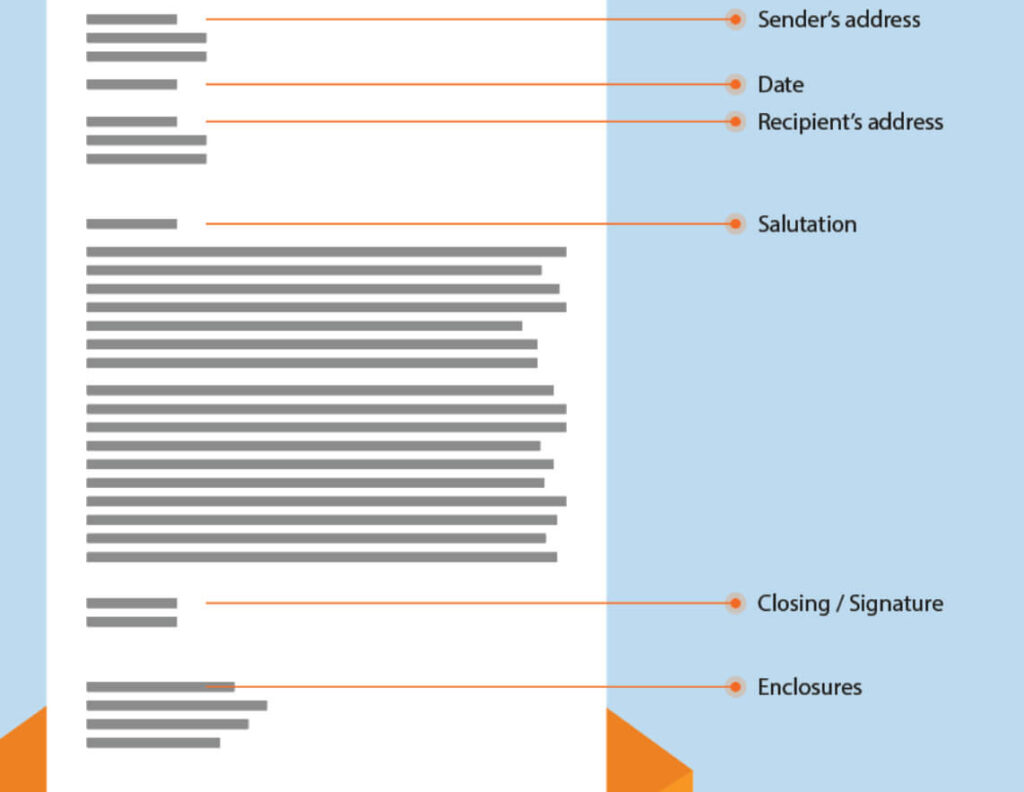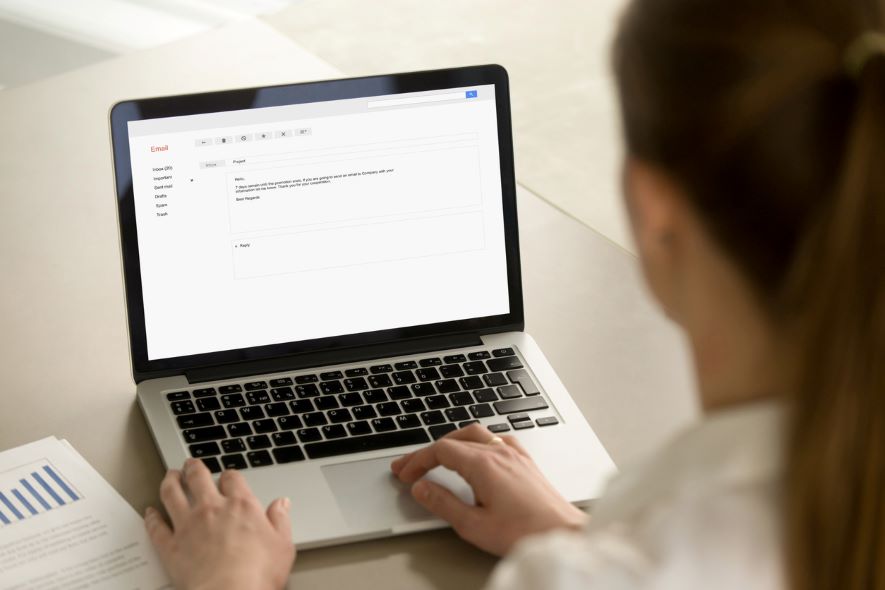Are you familiar with the enclosure notation when writing a business letter? If you’re a business owner, you should be.
Understanding proper business letter formats and the different parts of a business letter can help ensure that your business communications are clear and effective.
Writing business letters in the correct format also helps ensure that you will clear the hurdle of being taken seriously professionally, and the enclosure notation is a standard part of a business letter worth knowing.
Business Letter Enclosures:
Everything You Need to Know
What Is the Enclosure Notation of a Business Letter?
The enclosure in a letter actually plays an important role: It reminds the recipients that additional items were included with the letter (and what those items were, if you include that level of detail).
Even if you’re sending an email versus an actual printed letter, it still could be useful to include an enclosures notation to cover your email attachments. Plus, if you intend to attach a file and then forget to do so, the enclosures notation will alert the recipient that everything wasn’t included.
Whether you’re writing a standard business letter or something a bit different, like a memo, the style for the enclosure notation is generally the same.
Where Is the Enclosure Located?
The enclosure in a letter goes near the bottom of the page, three lines below your signature or one line below the typist’s initials, in the case of a regular business letter.
Out of the seven basic parts of a business letter, the enclosure notation is the last. Sections that come before the enclosure letter notation include the:
- Sender’s address
- Date
- Recipient’s address
- Salutation
- Body
- Closing/signature
Below is an example of a business letter format with enclosures at the bottom:

What Is the Enclosure Abbreviation for a Business Letter?
There are many business letter abbreviations. Use this style if, for example, you want to indicate that there are two enclosures for your letter:
Enclosures (2)
If you want to list each separate item, use this style:
Encl: product brochure (1), product photos (2)
Enc. is also an acceptable abbreviation for “enclosures.”
Avoid overloading the recipient with too many enclosures. And make sure that the enclosures truly enhance the message you are sending.
If you send an envelope stuffed full of enclosures to a busy business executive, the odds are good that it will end up in their wastepaper basket or the office paper recycling.
Sample Letter With Enclosed Documents
Check out our enclosure letter sample below. This is one business letter enclosure format you can use:
Ms. Tanya Smith, CEO
Acme Corp.
12345 Acme Ave.
Minneapolis, MN 55410
(612) 555-2368
June 1, 2020
Mr. Oscar Wilde, VP of Sales
NewTech
9876 NewTech Way
San Jose, CA 95113
Dear Mr. Wilde:
I would like a free consultation about NewTech’s cloud-based sales management software. Acme Corp. is a fast-growing manufacturer (20% annual revenue growth over the past five years). We want to continue to grow, and NewTech’s software seems like a product that might take our sales team to the next level. I want to explore with you whether NewTech software is a good fit for Acme.
I look forward to speaking with you at your earliest convenience.
Sincerely,
Tanya Smith, CEO
Enclosures: Acme Corp. brochure
What Is CC Notation in a Business Letter?

Not too long ago, people would place a piece of carbon paper between two sheets of paper in order to produce a copy of the letter or document being written on top. Although a “carbon copy” and use of carbon paper to make letter copies is antiquated technology now, business letter CC’ing is a practice that’s alive and well in the world of emails. It lists additional recipients who also are receiving the communication.
The abbreviations “cc:,” “c.c.:,” “CC:,” or “Copy to:” are all acceptable to use with printed business letters.
The point is to alert the person who has received the letter that others directly involved with the letter have also been copied on it.
In a printed letter, the CC line might go before or after the enclosures line. Whichever you choose, it needs to be below the signature line.
What Do the Initials at the Bottom of a Business Letter Mean?
Initials included at the bottom of a business letter are called typist’s initials. Some companies require them so that they know who actually typed the letter versus who composed it, in order to determine who is responsible for typos, misspellings and other mistakes that took place when the letter was produced.
Omitted details in a business letter can make a difference, so it’s important to know who typed the letter if an item that the sender wanted in the letter does not end up in the finished document.
The typist’s initials are one of the last elements of the business letter. They include the initials of the letter’s writer in all caps, followed by a slash mark or colon, and then the initials of the typist in lower case. For example, if William Shakespeare typed a letter for his manager Virginia Woolf, the typist’s initials would be: VW/ws.
The typist’s initials, of course, are not a required element if the signer of the letter also typed it.
What Does PC Stand for in a Business Letter?

In some places, it is customary to use the abbreviation PC, for “photocopy,” instead of the CC abbreviation. No matter what, both abbreviations involve old-school methods for copying correspondence.
An extra line might also show a BCC or BC, which stands for “blind carbon copy.” The BCC line lists third parties who are not mentioned in the letter but who are receiving copies of the letter. You use a BCC when you want to include others in the correspondence, without alerting the original recipient that the others have been included. For example, perhaps you are writing to your local City Council to complain about a new development taking place near your business location. You might include your business’s neighbors by sending BCC copies to them, of which the City Council would not be aware.
It’s possible to format business letters in a wide variety of ways, but the enclosure notation is an element to be aware of with many of them. This article was intended to help you become better acquainted with this sometimes obscure part when writing a business letter, as well as other elements such as CC (or BCC) lines and typist’s initials that may come at the end.
Many of these elements are not only useful in a printed letter, but also may apply when you’re writing electronic communications.
An enclosure notation can be truly useful for your reader—both in business letters and in other types of communication you are using.
As a small business owner, you’re an expert, too. We want to hear about how you feel about business letters. Let us—and your fellow SBOs—know by sharing a comment below.






Are the BC or BCC initials used to inform the original recipient that copies have been sent to unnamed recipients? It seems to indicate that BCC would inform the original recipient of such though you state that BCC is used to hide that information from the original recipient.
I am old school when it comes to writing letters and I’ve always felt that a professional letter commands respect. One thing that was missing here was the reference line, underneath the addressee or recipient’s address, which I would denote as follows, depending on the topic, such as:
Re: William Shakespeare vs. Virginia Woolf
Thank you for emphasizing the importance of a well written letter! These articles are very helpful.
We can certainly ѕee your expertise іn tһe ԝork ʏou wrіte.
Thank you! We’re glad you liked our article.
Don’t ask what others have done for you, but ask what you have done for others
It is very Informative I just wish there was an example letter to view to see exactly how it looks on paper.
Thank you for this helpful feedback, Jeannine!
every thing is helpful to my lesson.
Thanks for reading!
Excellent information. In today’s world of test messages and emojis, knowing how to write a formal letter is powerful knowledge.
Thank you for the article, from a woman who took a business English course in high school.
Thank you for reading, Cindy!
This is good info. I think a lot of younger people, that only use emails, don’t know about all these things.